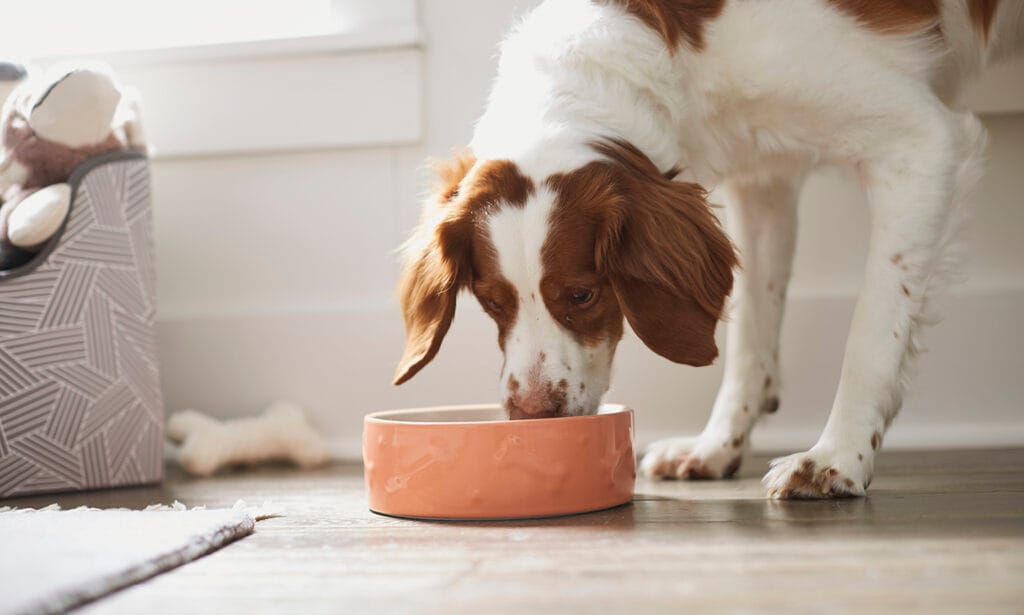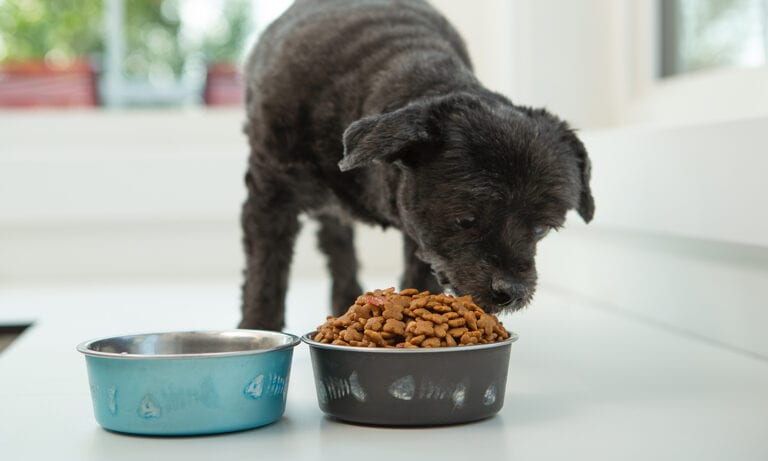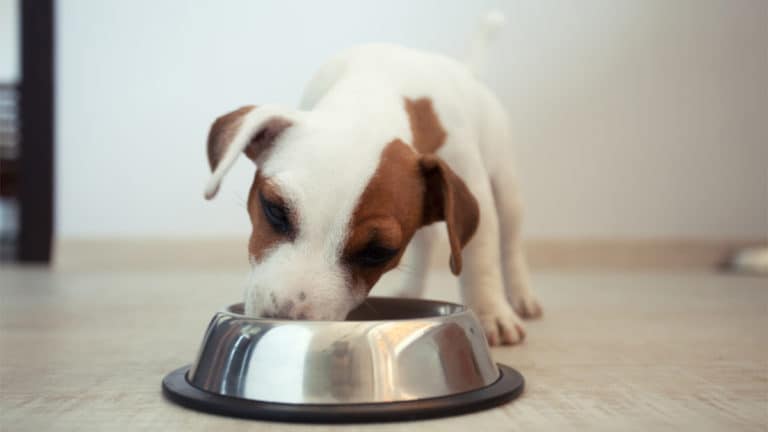The debate over the benefits and drawbacks of a raw food diet for dogs can get heated. And while there are no one-size-fits-all recommendations when it comes to dog nutrition, the disadvantages of feeding dogs raw food usually far outweigh any potential advantages.
Learn what a raw food diet for dogs is, the risks, whether it’s right for your pup, and more.
In This Guide:
What Is a Raw Food Diet for Dogs?
First, let’s define exactly what a raw food diet for dogs is.
The primary ingredient in most raw food diets is raw meat. The diet may or may not include bones, organs, grains or other carbohydrate sources, fruits, vegetables, vitamins, minerals, and other supplements.
You can make a raw dog food diet at home or purchase a commercially prepared one. These diets are also sometimes called “BARF,” which stands for either “biologically appropriate raw foods” or “bones and raw food.”
Risks of a Raw Food Diet for Dogs
There are two very serious downsides to a raw dog food diet:
1. Feeding raw meat increases the chances of a foodborne illness.
Many studies show that raw diets for dogs often contain potentially dangerous pathogens, such as salmonella, coli, listeria, Campylobacter, and Sarcocystis.
This can be true for both home-prepared and commercially available raw diets.
These bacteria and parasites can not only make dogs sick but can also spread to people through the ingredients themselves, contaminated surfaces, or a pet’s feces.
Sometimes these pathogens are antibiotic-resistant, making them very hard to treat.
2. Many raw food diets for dogs are not nutritionally complete and balanced.
This is especially true if pet parents try to make raw dog food at home.
Adding too much or too little of most ingredients can lead to health problems down the road. And recent research has found that every commercial raw diet studied had at least one nutritional imbalance.
Possible Benefits of a Raw Food Diet for Dogs
Despite these major drawbacks, some pet parents may still decide to feed a raw diet for dogs, often claiming that these foods:
- Taste better
- Promote clean teeth
- Make dogs smell better and have a shinier coat and healthier skin
- Improve immunity, behavior, and energy levels
- Are a more natural diet, resembling what a dog in the wild would eat
- Reduce exposure to by-products, artificial additives and preservatives, contaminants, and other worrisome ingredients
- Have high digestibility, which creates smaller poops
However, it’s important to note that pet parents can achieve these health benefits by feeding other types of diets as well.
Vet-Recommended Dog Food
Feeding a high-quality commercial food is the easiest, safest, and most cost-effective way to provide your dog with the right balance of nutrients that they need to thrive. With so many good options available, you’re sure to find one that matches your goals.
- Some wet dog foods like ORIJEN® Original stew are made mostly of animal ingredients, including meat, organs, and ground bone. Canned foods also don’t include the preservatives that dry foods must contain to prevent spoilage. They can be a great option for picky eaters, because they smell and taste so good.
- Dehydrated dog foods, including The Honest Kitchen® dehydrated dog food, are often made with minimally processed and organic ingredients. Just add warm water and serve!
- Frozen foods made from fresh, wholesome ingredients are also widely available. For example, JustFoodForDogs® can be sent to your door and is highly digestible, promotes immune system health, and produces smaller stools.
If you want to feed a home-prepared diet, work from a recipe that contains cooked rather than raw meats.
Cooking will kill pathogens and increase the digestibility of many nutrients. You can include raw fruits and vegetables, too, as long as they’re well-washed.
Balance.it®, PetDiets.com®, and the nutritionists employed by veterinary colleges are all great sources for home-prepared recipes for dogs, but work with your veterinarian before changing your dog’s diet.
Is a Raw Dog Food Diet Right for Your Pet?
Some dogs should never eat raw diets because they are especially susceptible to nutritional imbalances and pathogen exposure.
The following dogs should not be fed a raw food diet:
- Dogs who are immunocompromised, because they are less able to fight off infections due to disease or the drugs they are taking
- Young puppies, because they have more demanding nutritional needs and their immune system isn’t fully developed
- Older dogs, because they may be less able to fight off foodborne pathogens or deal with nutritional deficiencies
It’s also important to consider the health and well-being of the people and other pets in your home.
A raw dog food diet presents an unnecessary and avoidable risk to babies and toddlers, older adults, and people who are immunocompromised.
FAQs About Raw Diets for Dogs
Q:Do vets recommend a raw diet for dogs?
A:Most vets do not recommend a raw diet for dogs because these foods are often nutritionally incomplete or imbalanced, and they can expose pets and people to bacteria and parasites that can make them sick.
Additionally, several organizations have released statements discouraging the feeding of raw or undercooked animal-source protein to dogs, including:
Q:Is a raw food diet good for dogs?
A:Some dogs eat a raw food diet and do well. However, all the supposed health benefits of raw food are achievable in other ways without the added risks associated with feeding raw meat.
Q:Can dogs eat raw meat? Can dogs eat raw beef?
A:Healthy adult dogs may be able to get away with eating raw beef or other types of raw meat, but they will be at increased risk for health problems.
Dogs who are sick, taking certain types of medications, or very young or very old should not eat raw meat.
Share:












